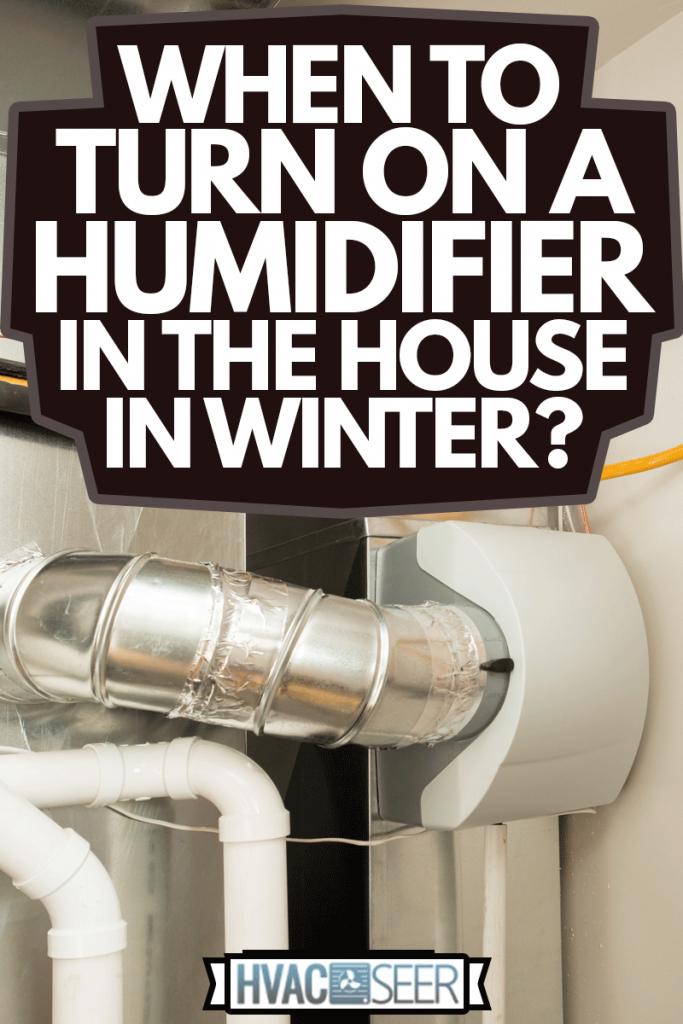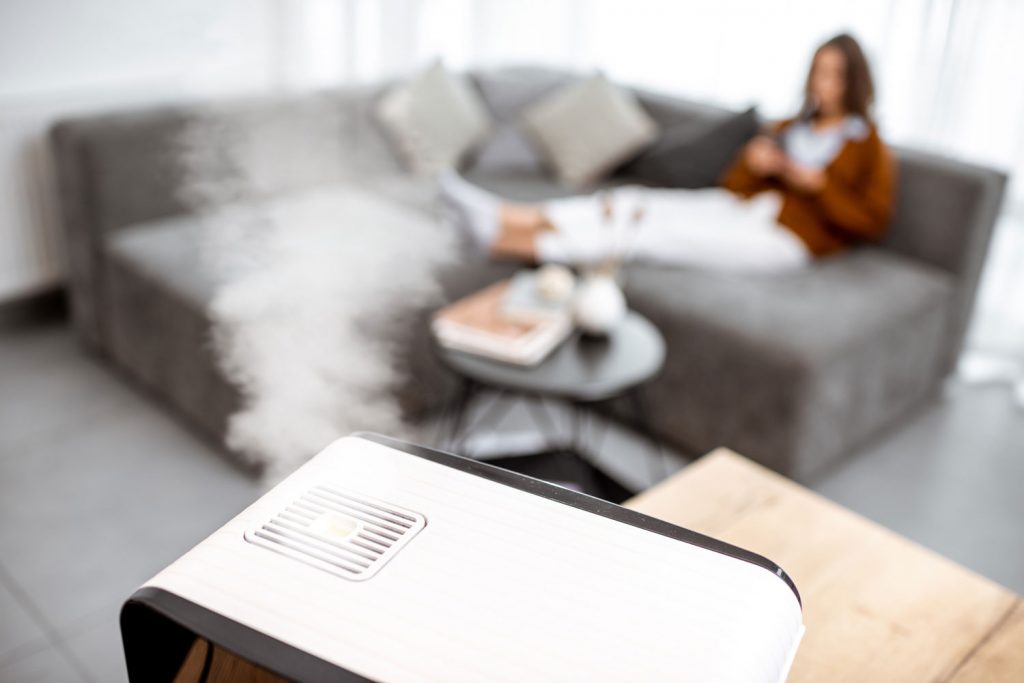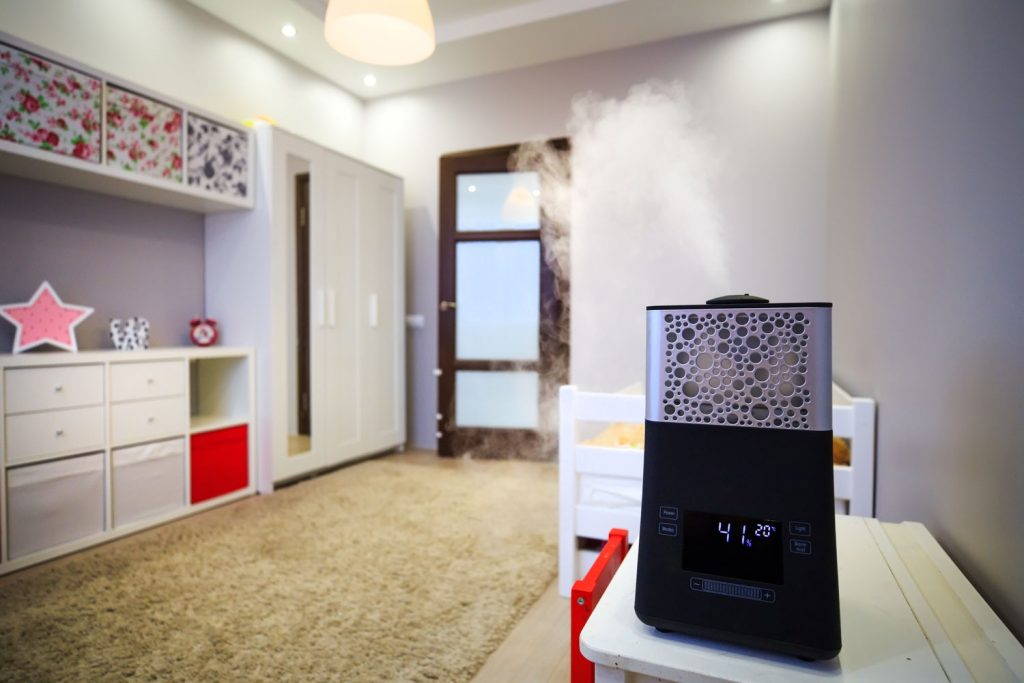Humidifiers release steam or water vapor into the air, increasing moisture levels in the immediate space. Homeowners should know that it’s not always necessary to keep this machine running all the time. So when is the right time to turn on the house humidifier, particularly in the winter? We researched for you, and here’s what we found.
Homeowners should only turn on the humidifier in the winter if the outside temperature permits its use. Using a house humidifier too much or too little during the cold season can cause serious problems if left unchecked.
Furthermore, it’s important to know the appropriate amount of humidity that the humidifier supplies in specific scenarios. Keep reading as we talk about the advisable humidity levels produced by house humidifiers. We’ll also talk about other things, such as how to adjust a house humidifier on a furnace.

Is It Good To Use Humidifier During Winter?

Turning on the humidifier in winter can provide benefits for household owners and guests. With this appliance, it can help reduce dry air, which is a fairly common problem during the cold season. The additional airborne moisture can help reduce skin irritation that dryness would otherwise cause.
Providing sufficient humidity to a home can also help preserve certain household items, including wooden doors, flooring, and furniture. Moreover, taking advantage of a humidifier's features enhances indoor comfort as it aids in maintaining a comfy interior temperature.
Check out this house humidifier on Amazon.
When Should You Turn On Humidifier?

It’s advisable to turn on the humidifier in winter only when the outside temperatures reach a specific range. Aim to only use this appliance when the outdoor temperature is within -20 to 10 degrees Fahrenheit.
You should pay attention to the level of humidity supplied by your house humidifier. The following list shows you the appropriate humidity levels for homes:
- 15% humidity: If the outside temperature is below -20 degrees Fahrenheit
- 20% humidity: If the outside temperature is between -20 to -10 degrees Fahrenheit
- 25% humidity: If the outside temperature is between -10 to 0 degrees Fahrenheit
- 35% humidity: If the outside temperature is between 0 to +10 degrees Fahrenheit
Moreover, it’s best to keep the house humidifier off during the summer months. Otherwise, individuals within the vicinity might be at risk of health issues like hyperthermia, which often has symptoms like dehydration, fatigue, and heatstroke.
Increasing the humidity beyond recommended levels can also damage different household items. For instance, walls and window sills may show signs of warping.
On the other hand, not using the humidifier enough can also lead to health problems in the winter. Some of these concerns may include (but aren’t limited to) asthma, bronchitis, dehydration, and nose bleeds.
When Should I Stop Running My Humidifier?

Stop using the humidifier in the summer. This appliance can cause more harm than good to homes if left functioning in the hot season. Consult your owner's manual or request help from the appliance's manufacturer if you're having difficulty turning it off.
Certain humidifier models may demand the following steps to disable its operations:
- Set the humidistat on the machine to the 'Off' position.
- Put the bypass duct damper to the ‘Summer’ position or a similar command. Take note that some humidifiers don’t have this element. If so, you can skip this step.
- Turn off the water supply to the house humidifier.
You can also watch the video below to help show you how to turn off a central humidifier:
Can You Run A Humidifier 24/7?
It’s fairly safe to keep a humidifier running around the clock. However, homeowners should always pay close attention to their dwelling’s humidity levels.
But it can be best for homes to run their humidifiers to only about 8 to 12 hours per day. Read more about the importance of proper humidifier usage by reading our post on that subject matter.
How Do I Adjust My Humidifier On A Furnace?

A whole-house humidifier generally comes with a furnace, but both systems don’t need to work simultaneously. But before you proceed with adjusting the humidifier on the furnace, ensure that you’re confident about the upcoming task. If not, contact a certified HVAC technician to help you out, or else you might run into costly mistakes.
If you still plan to proceed with this task, take note that you don’t need special tools in most cases to achieve appropriate results. Most of the essential elements should already exist on the whole-house humidifier.
Additionally, each whole-house humidifier will typically have a unique interface. Check the product’s instruction manual beforehand to know the location of the different elements.
Also, take note that the steps to adjust the humidifier will also be different if you possess an analog or digital model:
- If your humidifier is an analog model, turn the dial to the desired humidity setting.
- If your humidifier has a digital interface, navigate through the menu commands to set the appliance to the preferred humidity setting.
Some central humidifiers will also have an automatic setting. Turning on this feature will let the appliance use its sensors to set the appropriate humidity setting for the immediate environment without the need for human intervention.
But in some cases, this automatic feature may not be as reliable as expected. For instance, manually turn down the humidistat if you see condensation or water droplets forming on your windows.
How Do You Tell If Your Furnace Humidifier Is Working?
Check the house’s thermostat frequently to know that the furnace humidifier is functioning as intended. If your dwelling is too cold in the winter, check the humidifier if it’s doing its job.
You can also troubleshoot the device to verify if this machine is working well. The first step to troubleshooting a humidifier is to know the possible causes of certain problems. Some of the relatively common humidifier issues are:
- The fan isn't functioning
- No power
- Broken motor
- Lack of water
If the source of the issue is unclear, you may need to disassemble the appliance to gain a better look. Remember to disconnect the humidifier from its power source to prevent additional problems like electrocution.
After ensuring that the appliance no longer has power, you can follow these steps to take a typical humidifier apart:
- Remove the humidifier’s body by pulling down the locking tab. Then, swing the cover up.
- Unscrew the four screws holding the plastic frame.
- Unclip the wiring from the harness and set the plastic frame aside temporarily.
- Take away the fan, motor, and control board and set these items on a flat, clean surface for checkup and maintenance.
After the checking and troubleshooting, you can return the removed pieces to the humidifier. Be careful when reconnecting certain parts, as some elements might be fragile. Also, don't overtighten the mounting screws, or else you're going to strip them.
If you see damaged parts, such as a short-circuited control board, you may need to replace those parts to restore the humidifier's proper function. Make sure that the replacement parts are compatible with your specific humidifier model to prevent unnecessary purchases.
You can also check our post on how to troubleshoot a humidifier if it’s not working to gain more information about caring for this appliance.
Check out this replacement humidifier control panel board on Amazon.
Final Words
Only turn on the humidifier in the winter if the outside temperature allows it. Moreover, set the device’s humidistat to the correct setting to prevent issues like wooden furniture warping or household members contracting respiratory ailments.


